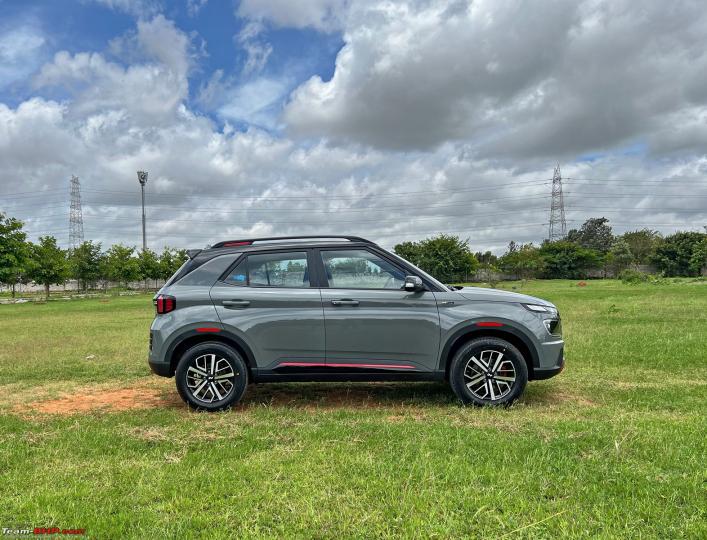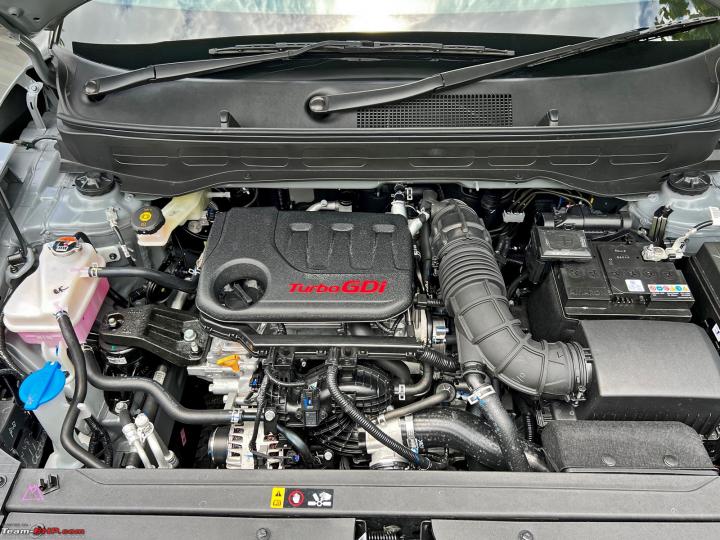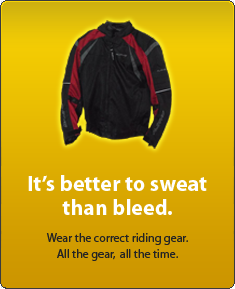News
Hyundai Venue N Line: Observations after a day of driving
The biggest compliment we can pay to the Venue N Line is that its suspension and steering are very un-Hyundai-like! The suspension particularly appears to be tweaked to deliver a sense of firmness that simply isn’t characteristic of Hyundais.
Driving the Hyundai Venue N Line DCT
1.0 T-GDI engine could have done with a little more poke. Hyundai tells us that the engine is already close to its limit and headroom for tuning is severely limited:

Fire up the familiar 1.0L 3-pot T-GDI motor and you are greeted by a distinct burble from the twin exhaust pipes. However, this exhaust note is not intrusive and can be drowned out by music or the A/C blower, if turned up. Hyundai mentioned that the Venue N Line’s exhaust note is a smidge louder than the i20 N Line’s and we agree with them.
Select "Normal" on the drive mode rotary selector, slot the DCT gearbox in "D", ease off the brakes, and the Venue N Line creeps forward albeit without the urgency one may expect from a torque converter-equipped automatic car. The burbly note from the exhaust continues as the DCT seamlessly works its way up to the higher gears. The tiny 1.0 T-GDI motor coupled with the DCT gearbox makes light work of city traffic while treating you to the muted thrum from the exhaust.
Select "Eco" on the drive mode rotary selector and the blue graphics on the instrument cluster turn green. The gearbox now hurries its way up through the gears with the intention to extract maximum fuel efficiency from the motor. The exhaust note gets a touch quieter as the car finds itself in the 5th, 6th and 7th ratios with minimal effort. It must be said that the drive mode selector exerts no influence on the exhaust note, which only quietens down as the DCT cycles to the higher rations and the revs drop to a relaxed 1,300 rpm. Kickdown response in Normal and Eco modes is slow as the gearbox takes a second or two to sort itself out before handing you the power.
As we made our way to the open road, the opportunity to explore "Sport" mode presented itself to us. Knocking the selector into Sport changed the green graphics in the instrument cluster to red, and all it took is one harmless prod on the loud pedal to wake up the drivetrain. The DCT promptly dropped a few gears and suddenly, we found ourselves in the meat of the powerband. Part throttle application is all that was needed to hustle the car to triple-digit speeds and the fruity exhaust note only egged us on even more! The gearbox, in Sport mode, is not as seamless as it is in Normal or Eco modes. Hyundai appears to have tweaked the gearbox to deliver a very mild yet deliberate jolt as the transmission holds onto lower gears and only upshifts much later in the rev-range, ensuring that the 1.0 T-GDI keeps delivering the goods. Shedding speed in Sport mode will influence the gearbox to drop a gear or two, to ensure that the engine is kept on the boil and the strong mid-range is available to the driver. Kickdown in Sport mode is discernibly quicker than in Normal or Eco drive modes, but not nearly as quick as one might expect.
Paddles behind the steering wheel allow you to take control of the gear changes - the left paddle allows you to drop a gear while the right paddle sends the transmission to the higher one. It must be said that the paddles are an absolute joy to use, and credit must go to their form factor and tactility. However, sustained punishment via the paddles is clearly not appreciated. The gearbox refused to downshift through the paddles after about 20 minutes of wringing the car by its neck. Calm driving for a couple of minutes allowed the gearbox to cool off and permitted the resumption of paddle-shift shenanigans.
While Sport mode is fun and the engine does not hesitate to deliver its power in the mid-range, several chinks in the Venue N Line’s armour will surface when you are done playing with the gearbox and decide to rev it up to the redline (6,000 rpm). Above 4,000 rpm is when the exhaust note is somewhat drowned out by the coarse 3-cylinder engine’s thrum, and at around 4500 rpm is where you can feel the car’s power dropping off a little. Go above 5,000 rpm and the 3-cylinder motor makes its presence felt in more ways than just the thrum, as the car’s power appears to completely drop off. This 1.0 T-GDI motor does not enjoy being wrung to its limits and is most happy delivering its power between 2,000 and 4,000 rpm. Even the gearbox, in Sport mode, tends to upshift well before the revs creep to the redline.
While there may not be any real drama or push-back-into-the-seat feeling from this 1.0 T-GDI motor, there is no doubt that the Venue N Line is a competent expressway cruiser that delivers power in a linear and fuss-free fashion. In city limits, the Venue N Line is an absolute hoot to drive especially in Sport mode, as the gearbox downshifts frequently and the muted yet snarly exhaust note bounces off the walls and flyover ramps. It’s a great point-and-shoot tool that takes little-to-no effort whatsoever to put a smile on your face. We thoroughly enjoyed blipping the throttle and dropping gears while navigating city streets and often found ourselves playing with the throttle and paddles just to listen to the exhaust note.
With that out of the way, it must be said that Hyundai has missed a trick or two while developing its N Line variants. We feel Hyundai could have done more to make the Venue N Line even more entertaining. A factory ECU tweak for a little more power or snappier gearshifts would have been welcome as this engine is mechanically no different from the one found in the Turbo variant of the Venue. We certainly think the N Line deserves a mild power bump to truly distinguish it from the regular Venue. And while the DCT is a great transmission, a manual option should have been offered for those who like to do the work themselves.
Suspension
The biggest compliment we can pay to the Venue N Line is that its suspension and steering are very un-Hyundai-like! The suspension particularly appears to be tweaked to deliver a sense of firmness that simply isn’t characteristic of Hyundais. It is clear that Hyundai has fiddled with the shocks' valving in order to achieve the firmer damping and rebound actions, and it is more than just perceivable. This firmness is immediately observed while negotiating ruts and undulations on city roads. But this firmness does not make the ride uncomfortable as such, and only communicates the road surface to the car’s occupants without tossing them around. The firm suspension is almost dismissive of ruts and undulations even at three-digit speeds.
On the open road, the Venue N Line feels quite settled at high speeds. It can feel a bit twitchy while switching lanes at speed, but that is due to the car’s compact crossover ground clearance and perhaps, the short wheelbase. It is not as settled as its European counterparts, but it’s certainly an improvement over the regular Venue.
However, much like the drivetrain, chinks in the Venue N Line's armour will surface when the car is pushed hard. Body roll, although controlled to a degree, becomes pretty obvious. Again, this could be down to the added ground clearance and the extremely average MRF Wanderer Eco tyres.
The steering is not feather-light and dead off-centre as most of us may have come to expect from Hyundais generally. There is some heft & weight to the EPS, even at lower speeds. The steering isn’t exactly sharp, but it’s accurate enough to keep you interested. However, the weighted steering simply does not inspire confidence while pushing the car around tight corners as it feels completely disconnected.
The brakes on the other hand are as good as they can get for a car of this size. All-round disc brakes will bring the Venue N Line to a stop fairly quickly and if it weren’t for the MRF tyres, the braking performance might have felt even more sure-footed. The brake pedal is sharp and takes a little getting used to, but once you’ve got the hang of it you wouldn’t be short on confidence when emergency braking becomes necessary.
Hyundai has done a decent job in calibrating the steering and suspension to deliver a sporty experience. However, we can’t help but feel that the changes are merely surface-level at best. Make no mistake, the Venue N Line is not a true "N" product and therefore, expectations must be tempered accordingly. The incremental changes the N Line variant brings with it, serve the intended purpose – provide the "N" flavour without the added calories and sugar. In that respect, the Venue N Line meets the objective.
Continue reading the discussion on the Hyundai Venue N Line on our forum.




















